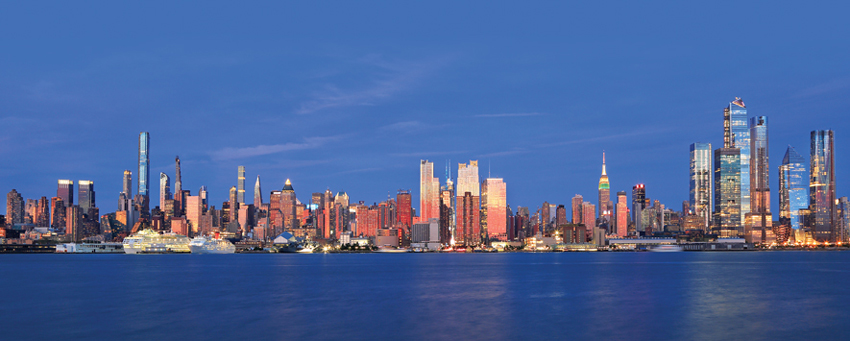Carbon Policy
Learning Objectives:
- Outline the leading-edge policies for reducing carbon emissions from both new and existing buildings for the five cities profiled.
- Describe ways to incentivize low-carbon building design, construction, and operations.
- Explain how a carbon cap-and-trade program for buildings works.
- Discuss the potential benefits of all-electric buildings.
Credits:
This course is approved as a Structured Course
This course can be self-reported to the AANB, as per their CE Guidelines
Approved for structured learning
Approved for Core Learning
This course can be self-reported to the NLAA
Course may qualify for Learning Hours with NWTAA
Course eligible for OAA Learning Hours
This course is approved as a core course
This course can be self-reported for Learning Units to the Architectural Institute of British Columbia
View course on architecturalrecord.com »
A goal without a plan is just a wish. That adage is especially true for the near-universally held goal of reducing human-caused carbon emissions. Cities—where a growing majority of the world’s population lives, where about three quarters of global emissions are generated, and where the impacts of the climate crisis are increasingly felt—have a critical role to play in developing and implementing the requisite plan. Many plans, in fact, because cities are uniquely well positioned to tailor strategies to local circumstances for maximum effect.

PHOTOGRAPHY: © VLAD GHIEA/ALAMY STOCK PHOTO
New York skyline, as seen from the west
“Cities set the trends and take the lead,” says Paul Cartwright, program manager for new-building efficiency with C40 Cities, a global network of major municipalities committed to addressing the climate crisis. “Even where cities don’t have direct powers, they still find ways to take a leadership role.” Parallel with such initiatives as the 2030 Challenge, and the AIA’s 2030 Commitment, C40’s member cities have pledged to ensure that new buildings operate at net zero carbon by 2030, and all buildings by 2050.
It’s now 2020. In this section, RECORD checks in with five of these leading cities—New York, San Francisco, Vancouver, Stockholm, and Tokyo—asking whether their climate-action plans are on track to meet these commitments, and sharing snapshots of key initiatives and achievements to date.
Within cities, buildings are one of the largest consumers of energy, often accounting for more than half—and, in highly dense urban areas where mass transit reduces pollution from the transportation sector, more than 70 percent—of greenhouse-gas emissions, according to a 2016 analysis conducted by C40 in collaboration with Arup. A 2017 study by the McKinsey Center for Business and Environment suggests that optimizing energy use in buildings can reap between 20 and 55 percent of a city’s emissions-reduction potential. Heavy-hitting measures include stringent standards for new construction, building-envelope retrofits, HVAC and water heating, lighting upgrades, and installation of building automation and controls. Add in cuts from decarbonizing the electricity grid, and these efforts can account for up to 60 percent of a city’s potential savings.
There are many tools available to catalyze these reductions. Cities have the power to set performance criteria and energy consumption limits, such as Tokyo’s cap-and-trade program (page 126), New York’s Local Law 97 (page 120), and Vancouver’s Zero Emissions Building Plan (page 122). They can demonstrate best practices in the municipality’s own real-estate portfolio, as in Stockholm’s aggressive energy-consumption limits for buildings on city-owned land (page 124) and San Francisco’s requirement that new municipal facilities depend only on electricity for power (page 121). Cities can use money—or money-equivalent mechanisms, such as density bonuses and preferential permit processing—to incentivize improvements. Vancouver’s 5 percent density allowance, for instance, ensures that developers building to Passive House standard aren’t penalized on square footage because of thicker walls. And cities have the ability, through information and communication, and through connections with higher levels of government, to influence other actors to implement additional education measures.
A critical obstacle cities often face in achieving emissions-reduction goals is a limited ability to access, manage, and analyze high-quality data. Data enable municipalities to understand the source and significance of their greenhouse-gas emissions, set appropriate mitigation targets, develop strong and cost-effective climate-action plans, and monitor progress. Leading cities have developed successful reporting and disclosure policies to generate high-quality data on building energy performance, and the analytical tools to make sense of it. Tokyo, for example, introduced energy-reporting policies for private office buildings in 2005, and has since achieved energy savings in this sector of about 30 percent. American cities such as New York are seeing results from benchmarking and disclosure schemes. And Stockholm’s showcase development, Royal Seaport, backs up its energy-consumption limit for new buildings with post-occupancy monitoring and reporting.
A 2019 survey conducted by the U.S. Conference of Mayors found that 96 percent of 182 responding cities from 39 states are feeling the impact of the climate crisis. In the last five years, nearly every one of them has experienced a climate-related incident, whether flooding, heat wave, drought, or forest fire. Over the last 12 months, 60 percent have launched or significantly expanded a climate initiative or policy, and 57 percent will launch or significantly expand a climate initiative or policy this year.
At this critical juncture in the growing climate emergency, the building-related actions highlighted in the following pages demonstrate what becomes practical and possible when cities commit to a carbon-free future. Katharine Logan















